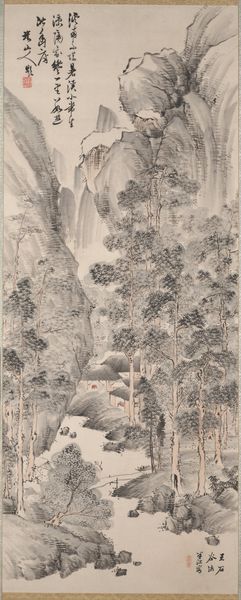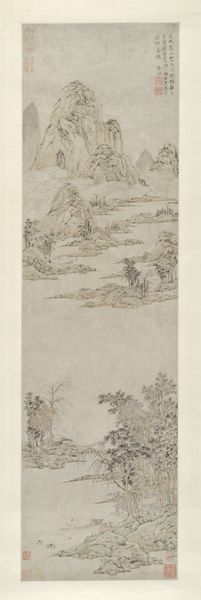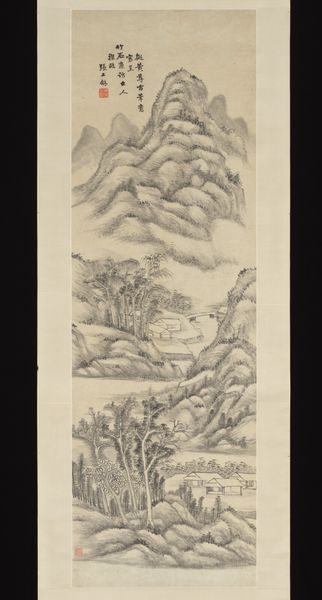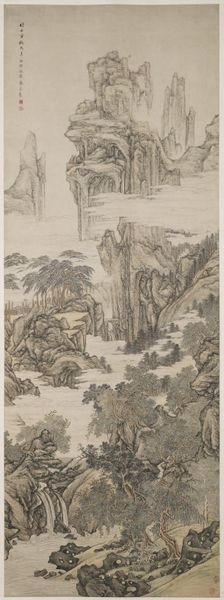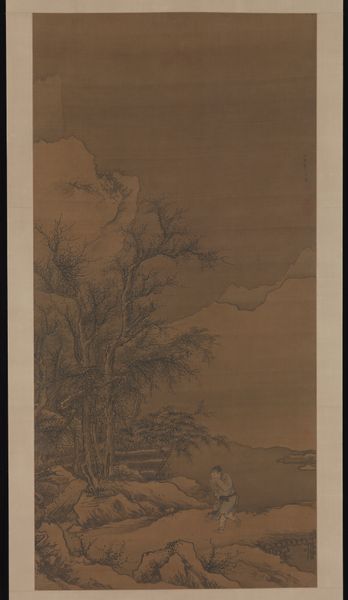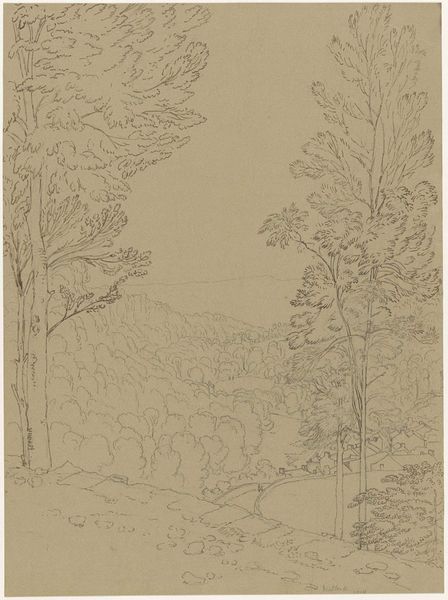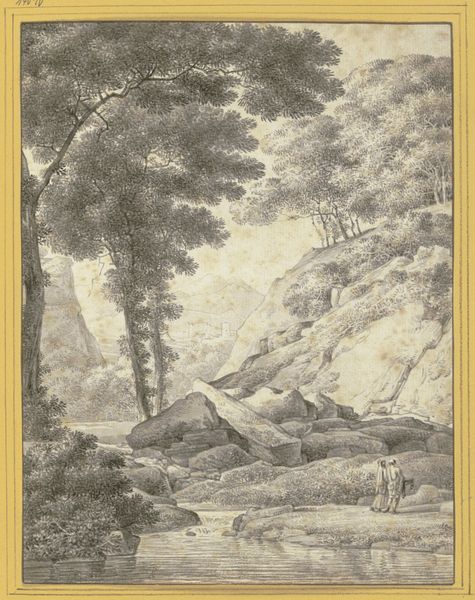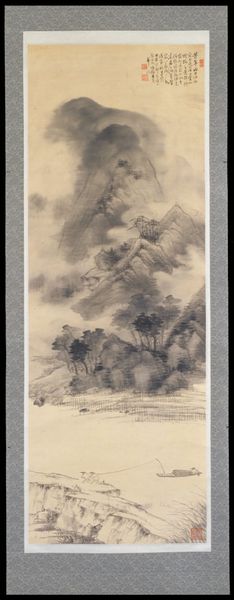
drawing, paper, ink-on-paper, hanging-scroll, ink
#
drawing
#
ink painting
#
asian-art
#
landscape
#
charcoal drawing
#
paper
#
ink-on-paper
#
hanging-scroll
#
ink
Dimensions: 131 5/8 × 39 in. (334.3 × 99.1 cm) (image)169 3/4 × 48 in. (431.2 × 121.9 cm) (without roller)
Copyright: Public Domain
Liu Yuanqi’s ink-on-paper scroll painting, Scholar in Landscape, transports us to the world of the late Ming Dynasty. The monochromatic ink, applied with layered brushstrokes, vividly depicts a contemplative scholar amidst a vast, mountainous terrain. The materials themselves speak to a rich cultural history. Ink, derived from soot and glue, and applied with brushes made of animal hair, requires immense skill to master; different densities of ink create depth and texture. The absorbent nature of the paper demands precision. Note the labor involved in the repetitive gestures of the brushwork, building up the image, mirroring the artist's own dedication. Such landscape paintings were more than just depictions, they embodied the literati ideals of harmony and introspection. The social significance of the artwork lies in its ability to evoke emotions and connect with viewers. By understanding these materials and their historical context, we gain a deeper appreciation for this artwork.
Comments
minneapolisinstituteofart almost 2 years ago
⋮
A thatched hut is depicted in the mountains near the middle of the painting, exposed among the trees, while a waterfall cascades before it. This is the home of a hermit, but the only figure we can see within the hut is his servant. There is a table and books in the study, but it is otherwise empty. He is probably out in the mountains somewhere, spending time in nature or gathering herbs, a popular pastime within the spirit of eremitism. Meanwhile, a lone scholar crosses the bridge near the bottom of the painting, on his way to visit the hermit only to find the recluse not at home. The theme portrayed here—visiting a recluse and not finding him in—was popular in earlier Tang dynasty poetry. Generally, of course, this discovery would be disappointing to a traveler. However, scenes like this imply a different perspective: the scholar will be satisfied with the experience whether his friend is home or not. The journey itself seems to be the most important part of the visit, as he leaves his busy life to enjoy the tranquility of nature and temporarily experience the hermit lifestyle.
Join the conversation
Join millions of artists and users on Artera today and experience the ultimate creative platform.
